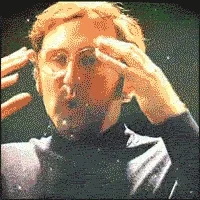Originally published at: The wild world of solar-powered sea slugs | Boing Boing
…
Fascinating post! make no mistake.
but i gotta (as an ooold biochemist) flip over and muse upon:
Both of these animals are able to make chlorophyll, which is one of the chemicals that is needed for photosynthesis to occur. And animals should not be able to do this.
Is “should (not)” the correct modal verb here? Sounds almost like “bad sea slug! bad!” how about instead: “in the past animals have not been known to produce chlorophyll intrinsically”? (“Too many words, jack!”) Chlorophyll and the heme part of hemoglobin are not that dissimilar in molecular structure. The former has a magnesium atom in the middle of a porphyrin ring the latter an iron atom. The apparently tricky bit is that photosynthetic organisms tend to be flatter; y’know like solar panels. And this amazing sea slug does manage to pull off the parallel evolution to a leaf. It’s all amazing and beautiful!
If cows could photosynthesize, how much less food would they need?
It’s better than

![]()
Also, I’m photosynthsizing right now!
This is above my pay grade but the scientist can be found here: Middlebrooks, Michael | University of Tampa
If cows could photosynthesize, they wouldn’t have to fart/burp methane.

I talked to my high school biochemistry teacher about using genetic engineering (a new thing at the time) to make humans photosynthetic. His opinion (something he always regarded quite highly; I was never sure how much to make of it) was that not enough light makes it into our skin to make it worthwhile, but, we could potentially do it in our eyeballs. RIP Mr. Litwin.
A short story by Zenna Henderson, Ad Astra, speculates about an accident that made the first photosynthetic human.
This topic was automatically closed after 5 days. New replies are no longer allowed.